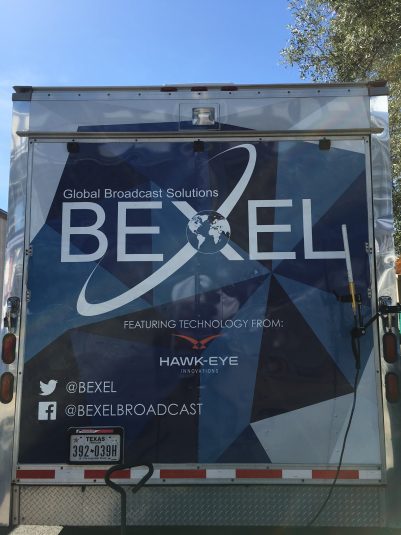Hawk-Eye, Bexel Give Big-Time Look to Start-Up Rugby League
Story Highlights
The Professional Rugby Organization (PRO Rugby) began its inaugural season on April 26, and the five-team league is making the most of IT technology to make sure its TV and streaming productions befit a major sports league. Helping in those efforts is Sony division Hawk-Eye Innovations, which is working alongside Bexel to bring automated production systems to match coverage.

Bexel and Hawk-Eye Innovations are working together to meet the production needs of the Professional Rugby Organization.
“This has been an opportunity to take [Hawk-Eye’s] SMART Production [solution] and evolve to the next level, beyond tennis, basketball, and hockey,” says Jason Bernstein, managing director, North America, Hawk-Eye Innovations. “It shows the evolution of the past few years.”
Part of that evolution is simply the number of production days that the Hawk-Eye team is involved with annually: more than 300 this year, compared with 24 in 2014. A large proportion of that is thanks to a deal with the ATP for outside courts on the Masters Tour as well as some new products, such as an automated graphics system and improved camera integration.
“The secret sauce is using IT-based systems,” says Laurence Boyd, director, SMART Production, Hawk-Eye Innovations. “Then overlaying graphics and slaving cameras together is easy.”
The PRO Rugby workflow, for example, involves a mix of manned and robotic cameras, with the former in the camera 1 and camera 2 positions and the latter at the high-end-zone and slash positions. Rugby coverage is different from tennis productions in two big ways: there is no player tracking, and there are no massive databases of statistics and scoring information that can be pumped into an automated graphics system and sent directly to air.
“We determine the field of view and a volume of space that is of interest, and then the cameras are slaved together. We can control them manually to get crowd shots, bench shots, or beauty shots from up high via preprogrammed shots,” says Boyd. “We’re making the most of a smaller staff.”
Adds Bernstein, “We want to give it a big-show feel without having to break the bank. Not having any diminished experience for the on-air viewer is most important as we showcase the sport in a prominent fashion.”
A key partner in the project is Bexel, which built a bespoke mobile unit that is approximately 28 ft. long. There is no traditional production switcher nor a replay or graphics position. A USB panel, for example, allows the director to control the replay server with the push of a button.
“It has our equipment and provides a production environment that is traditional but much more efficient,” Bernstein explains. “There is a Sony slow-motion controller and a laptop for graphics, but one of the nice things is that the director can run their own replays or bookmark something.”
An interesting difference in a production environment based on IP and IT tools is that technical changes in advance of the production involve programmers and software developers instead of engineers. For example, Hawk- Eye’s team of more than 30 developers in its main office in the UK adapted the system to be able to create graphics without a data feed. Boyd opines that the flexibility to respond to custom needs gives Hawk-Eye a big advantage.
“It’s really been fun, and the sky is the limit,” adds Bernstein. “The fun has been bringing new technology and new coverage for a sport that is truly unique. And there are so many opportunities to evolve once we are onsite with IT: we can add virtual graphics and other things that a league or client would be interested in.”
He is already looking forward to next season, because the Hawk-Eye team had only about three weeks to get ready for this one.
“Our goal,” he says, “is not to disrupt as much as it is to evolve and show that new technology is not scary but just a new way of doing some things.”
